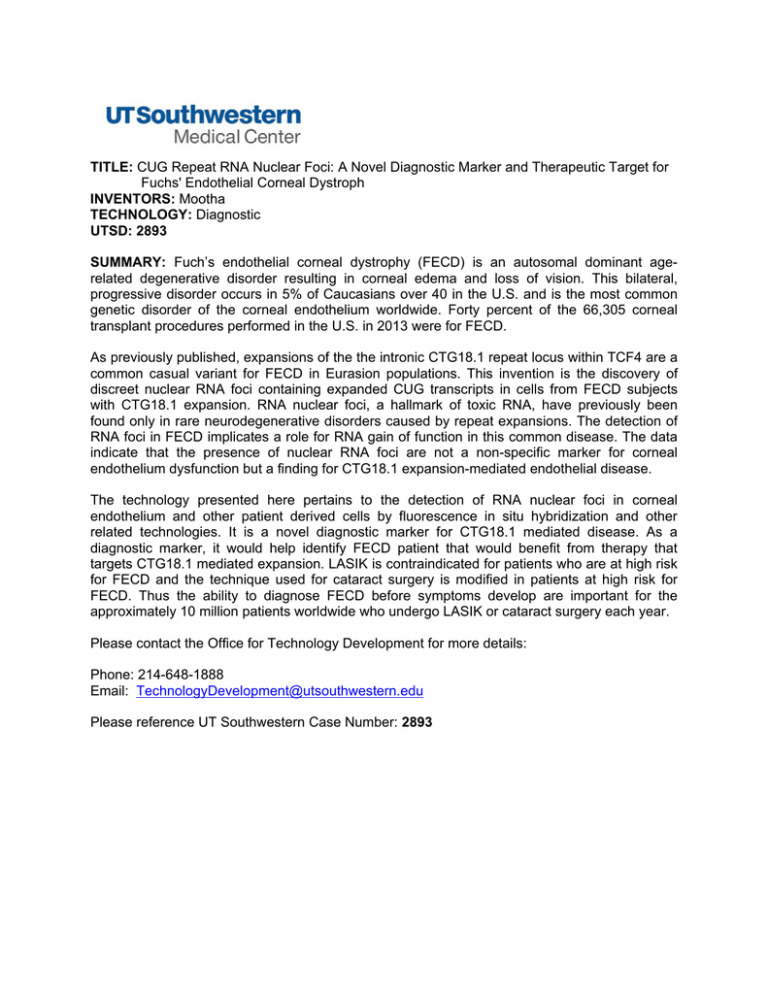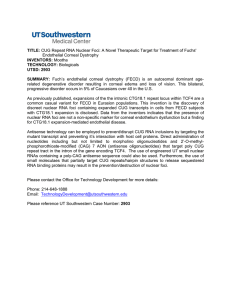TITLE: INVENTORS: TECHNOLOGY:
advertisement

TITLE: CUG Repeat RNA Nuclear Foci: A Novel Diagnostic Marker and Therapeutic Target for Fuchs' Endothelial Corneal Dystroph INVENTORS: Mootha TECHNOLOGY: Diagnostic UTSD: 2893 SUMMARY: Fuch’s endothelial corneal dystrophy (FECD) is an autosomal dominant agerelated degenerative disorder resulting in corneal edema and loss of vision. This bilateral, progressive disorder occurs in 5% of Caucasians over 40 in the U.S. and is the most common genetic disorder of the corneal endothelium worldwide. Forty percent of the 66,305 corneal transplant procedures performed in the U.S. in 2013 were for FECD. As previously published, expansions of the the intronic CTG18.1 repeat locus within TCF4 are a common casual variant for FECD in Eurasion populations. This invention is the discovery of discreet nuclear RNA foci containing expanded CUG transcripts in cells from FECD subjects with CTG18.1 expansion. RNA nuclear foci, a hallmark of toxic RNA, have previously been found only in rare neurodegenerative disorders caused by repeat expansions. The detection of RNA foci in FECD implicates a role for RNA gain of function in this common disease. The data indicate that the presence of nuclear RNA foci are not a non-specific marker for corneal endothelium dysfunction but a finding for CTG18.1 expansion-mediated endothelial disease. The technology presented here pertains to the detection of RNA nuclear foci in corneal endothelium and other patient derived cells by fluorescence in situ hybridization and other related technologies. It is a novel diagnostic marker for CTG18.1 mediated disease. As a diagnostic marker, it would help identify FECD patient that would benefit from therapy that targets CTG18.1 mediated expansion. LASIK is contraindicated for patients who are at high risk for FECD and the technique used for cataract surgery is modified in patients at high risk for FECD. Thus the ability to diagnose FECD before symptoms develop are important for the approximately 10 million patients worldwide who undergo LASIK or cataract surgery each year. Please contact the Office for Technology Development for more details: Phone: 214-648-1888 Email: TechnologyDevelopment@utsouthwestern.edu Please reference UT Southwestern Case Number: 2893




